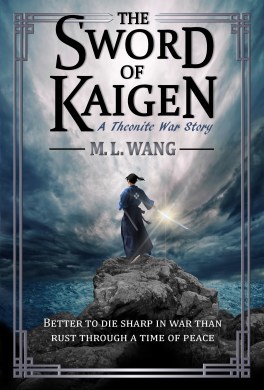"The Sword of Kaigen" review
Overview
Title: The Sword of Kaigen
Author: M.L. Wang
Subgenre: Martial fantasy, High fantasy
2021 Bingo squares: Set in Asia, Cat squasher, Self published, Chapter titles, “{Blank} of {Blank}”
Recommend: Yes!
Stars: 4.5/5
Review
It’s incredible how much M.L. Wang manages to fit into The Sword of Kaigen. It’s a book of contrast and conflict: Two protagonists in a coming-of-age story, Misaki the mother, and Mamoru the son. Misaki’s own life is of contrasts; she received a modern, foreign education and then returned to a remote, traditional life. She and her husband do not have the harmony or communication in their marriage that she desires; he wants to ensure that they never fight, so he leaves her alone. The novel starts with a new boy coming to Mamoru’s school from the city, and again his modern experiences conflict with the mountain village’s traditional culture. And the central plot revolves around conflict, as Ranganese invaders are coming to the Kusanagi Peninsula, and the jijakalu are all that stand in their way.
With the conflict comes epic battle scenes, devastating character losses, and emotional highs. This is also not a novel where the ending comes when the battle ends; we get to see its aftermath in exquisite detail. What does it mean to be a survivor? How will the survivors deal with their loss? What does rebuilding look like? And what was the real motivation behind the attack in the first place?
The Sword of Kaigen is part of M.L. Wang’s Theonite universe, of which there are currently two other novels: Planet Adyn and Orbit. However, while those two novels comprise part of the main Theonite series, which is currently discontinued, The Sword of Kaigen can be read totally standalone with absolutely no knowledge of the rest of the universe needed.
What may feel a bit jarring, at least at first, is not worldbuilding per se but the use of Japanese honorifics; it took me a few chapters to get used to this. That, combined with a deluge of unfamiliar names and terms made the book take just a bit to get into. But once past that slow start, oh man, what a book.

